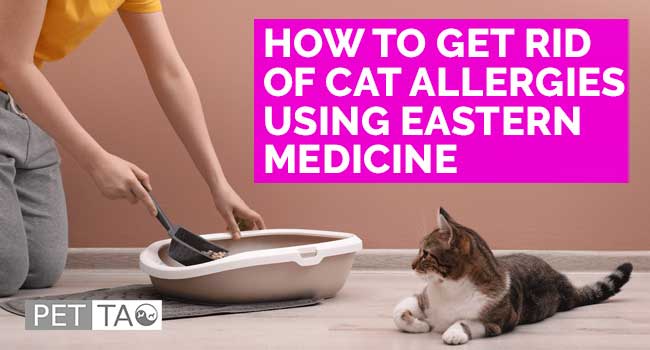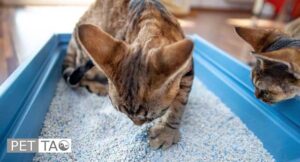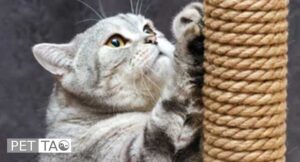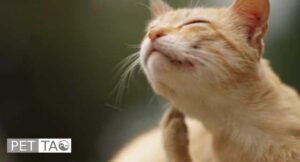How to Get Rid of Cat Allergies Naturally: Good News and Bad News
So, you want to get rid of cat allergies naturally?
Well, we have some good news and some bad news. Let’s get the bad news over with first.

He would explain over and over again, “Allergies, they wax and wane, but they never go away.”
That’s the bad news.
But the good news is, you can get rid of cat allergy symptoms.
With cat allergies, there is a “threshold.” If you go over the threshold, your cat suffers allergy symptoms.
If you stay under the threshold, the allergy symptoms go away.
The trick is keeping your cat under the allergy threshold.
And, Eastern veterinary medicine, aka TCVM (Traditional Chinese Veterinary Medicine), is how he did it.
TCVM is a holistic approach to veterinary care that incorporates acupuncture, herbal medicine, food therapy, and other techniques.
Acupuncture
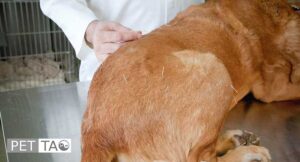
It aims to balance the body’s energy flow and promote overall well-being.
Acupuncture can help alleviate allergy symptoms by reducing inflammation and boosting the immune system.
Food Therapy
Dietary modifications can play a vital role in managing cat allergies naturally.
TCVM diets are based on food energetics and include specific foods to support the body’s balance and reduce allergy symptoms.
Food therapy is a branch of TCVM that focuses on diet and nutrition to promote health, balance the body’s energy, and address specific animal health conditions.

For example, our veterinarians often find cats with allergies benefit from a cooling, limited-ingredient diet. Here’s an example of their slow-cooker recipe.
Limited-ingredient diets contain a minimal number of ingredients compared to traditional cat foods.
Usually, limited-ingredient cat foods have a single protein source and a limited selection of easily digestible carbohydrates.
They also avoid common allergens like grains (wheat, corn, or soy) and artificial additives (colors, flavors, or preservatives) that can trigger adverse reactions.
Please check with your veterinarian before changing your cat’s diet.
Environmental Modifications
TCVM recognizes the importance of the environment in naturally managing cat allergies.
You can do many things to minimize your cat’s exposure to allergens and help reduce symptoms.
Some examples are:
- Keep the Living Area Clean: Regularly clean your cat’s living area, including their bedding, litter box, and surrounding areas. Use hypoallergenic cleaning products to minimize potential irritants.
Use Hypoallergenic Litter: Some cats may be sensitive to certain types of cat litter. Consider using hypoallergenic, dust-free litter to reduce potential allergens and irritants.
- Provide Proper Ventilation: Ensure good airflow in your cat’s living area to minimize the accumulation of allergens and promote fresh air circulation. Use fans or open windows (with screens) if needed when weather permits.
- Regular Grooming: Regularly groom your cat to reduce the amount of allergens present in their fur. Brushing your cat’s coat can help remove loose hair and dander that may trigger allergies. Consider using a grooming tool designed to reduce shedding and dander. Our vets recommend Curry on a Stik, a massage grooming tool. Its massage function supports skin and coat health. I have one at home, and my cats love it!
- Air Purifiers: Consider using air purifiers with HEPA filters to help reduce airborne allergens in your cat’s environment, improving your and your cat’s air quality.
- Control Fleas and Parasites: Fleas and other parasites can worsen cat allergies. Maintain a regular flea control regimen and consult your veterinarian for appropriate prevention and treatment measures.
Stress Reduction
Emotional and mental stress can worsen allergic reactions. In turn, TCVM emphasizes managing stress in pet health challenges.
Stress reduction techniques can help improve overall well-being and potentially alleviate allergy symptoms.
Some examples of stress reduction techniques for cats are:
- Provide a Safe Space: Create a quiet and secluded area where your cat can retreat when stressed. This can be a cozy bed or a separate room where they feel secure.
- Vertical Space: Cats often feel safer with elevated perches or cat trees to climb on. These spaces give them a sense of control and security, allowing them to observe their surroundings from a higher vantage point.
Environmental Enrichment: Stimulate your cat mentally and physically by providing toys, scratching posts, puzzle feeders, or interactive play sessions. Engaging in these activities can help reduce stress and boredom.
- Pheromone Therapy: Feliway, a synthetic feline facial pheromone, can be used as a diffuser or spray to create a calming atmosphere. It mimics the scent cats release when they rub against objects, helping them feel more secure and relaxed.
- Routine and Predictability: Establishing a consistent daily routine can provide a sense of stability for your cat. Regular feeding times, play sessions, and grooming sessions can help reduce anxiety and stress.
- Gradual Introductions: If introducing a new pet or person to your cat, take it slow and allow incremental interactions. Provide a positive and controlled environment, using treats and praise to reinforce positive associations.
- Calming Music: Playing soothing music or ambient sounds specifically designed for cats can create a calming atmosphere and help reduce stress. Several music streaming platforms offer cat-specific music that incorporates frequencies and rhythms pleasing to felines.
- Litter Box Management: Ensure the litter boxes are clean and easily accessible to your cat. Cats are generally clean animals, and a dirty or hard-to-reach litter box can cause stress and lead to litter box aversion. It’s best to have at least one litter box for each cat in the house.
- Massage and Grooming: Some cats find gentle massage or grooming sessions relaxing. Brushing your cat’s fur, especially if they enjoy it, can help create a positive bonding experience and promote relaxation.
Eastern Herbal Medicine
Eastern herbal formulas can be prescribed to support the immune system, reduce inflammation, and address specific allergy symptoms.
TCVM herbs help manage cat allergies naturally by addressing the underlying imbalances in the body and supporting the immune system.
While they cannot completely “get rid of” cat allergies on their own, herbs will alleviate symptoms and improve your cat’s overall well-being.
Here’s how TCVM herbs help cat allergies:
- Balancing Energy: TCVM views allergies as imbalances in the body’s energy. Herbs are selected based on their specific energetic properties to restore balance. For example, if there is excess heat or inflammation, cooling herbs may be used to counteract these imbalances.
- Modulating the Immune Response: Allergies involve an overactive immune response to allergens. TCVM herbs can help modulate the immune system, reducing hypersensitivity and allergic reactions. Some herbs have anti-inflammatory properties that can alleviate allergic inflammation.
Reducing Allergic Symptoms: TCVM herbs can target specific symptoms associated with allergies, such as itching, sneezing, and respiratory congestion. Certain herbs have antihistamine or antiallergic properties that may help relieve these symptoms.
- Supporting Organ Function: TCVM considers the organs involved in allergies, such as the Lung and Spleen, and aims to support their function. Herbs are selected to strengthen the organs and promote their proper functioning, which can help alleviate allergy-related imbalances.
- Individualized Treatment: TCVM practitioners consider each cat’s unique constitution, symptoms, and underlying imbalances when prescribing herbal formulas. They choose customized herbal blends to address your cat’s needs, considering their overall health and any concurrent conditions.
A couple of excellent examples of Eastern herbal remedies our veterinarians use to help cat allergies are:
As mentioned, herbal remedies should be administered under the guidance of a TCVM veterinarian who can tailor the treatment to your cat’s specific needs.
In addition, most TCVM herbal formulas require a veterinarian’s authorization to purchase.
It’s crucial to consult with a qualified TCVM veterinarian who can evaluate your cat’s specific condition and develop an individualized treatment plan.
A TCVM-trained veterinarian will assess your cat’s overall health, diagnose the underlying causes, and create a holistic approach that combines TCVM techniques with conventional treatments if necessary.

